Portrait of his wife: Russian Muses of European artists
Categories: Celebrities | Culture | Europe
By Pictolic https://pictolic.com/article/portrait-of-his-wife-russian-muses-of-european-artists.htmlOn July 12, 1919, the marriage of the artist Pablo Picasso and his beloved Olga Khokhlova took place at the city hall of the seventh Paris arrondissement.
Let's remember who was inspired by Dali, Matisse and Picasso? Olga, Elena and Lydia. Let's take a look at the portraits of amazing Russian women who for many years were the companions of the greatest artists of the twentieth century.
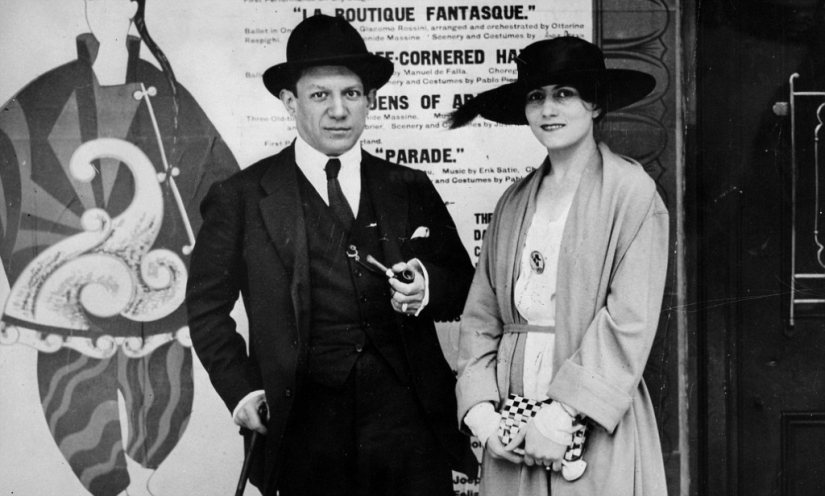
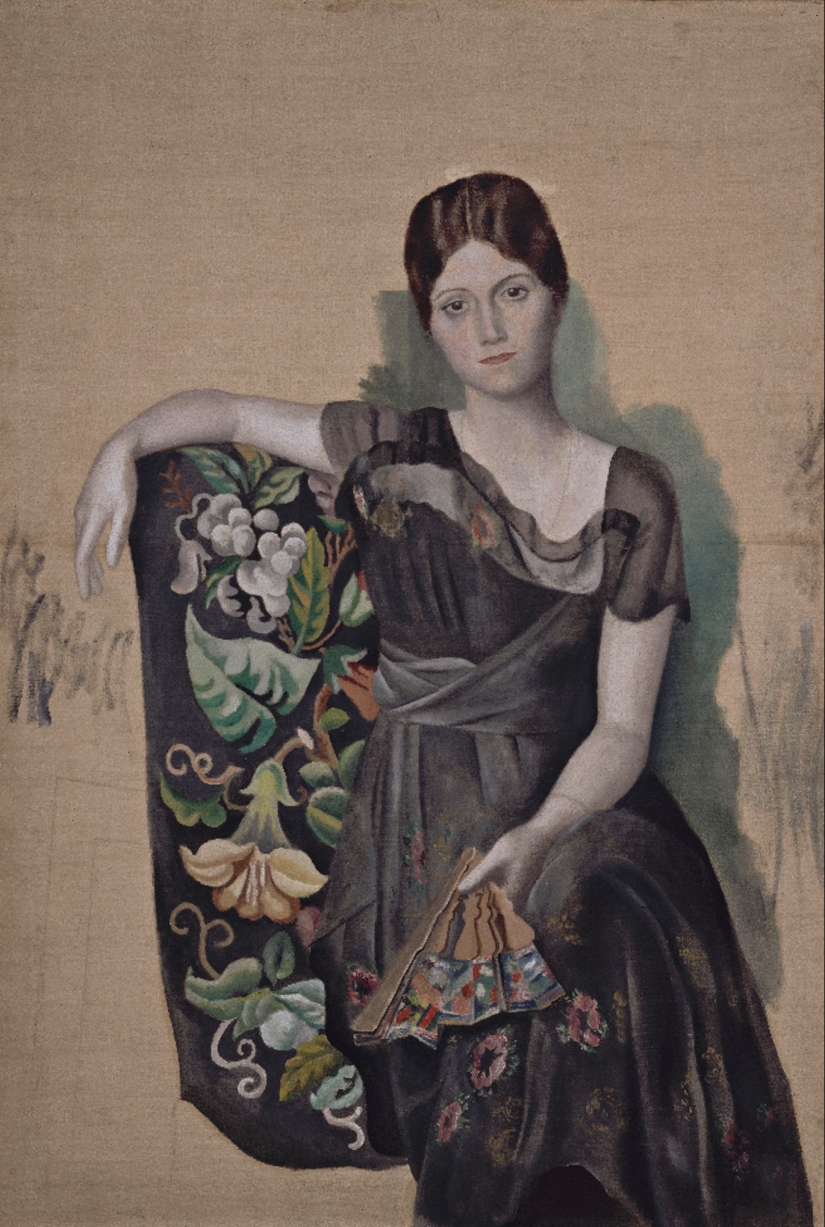
Pablo Picasso. Portrait of Olga in a chair. 1917. Picasso Museum, Paris, France.The muse of a legitimate marriage" Portrait of Olga in a chair " Picasso wrote at the very beginning of their acquaintance. Fragile, elegant, reserved, melancholic-this was Olga Stepanovna Khokhlova, the ballerina of the legendary Sergei Diaghilev troupe. She fascinated Picasso so much that for her sake, the 37-year-old abstract artist temporarily changed his style and returned to realism. After all, she asked him: "I want to recognize my face in portraits..." And she came out recognizable — both in other portraits, and in this one-perhaps the most famous.
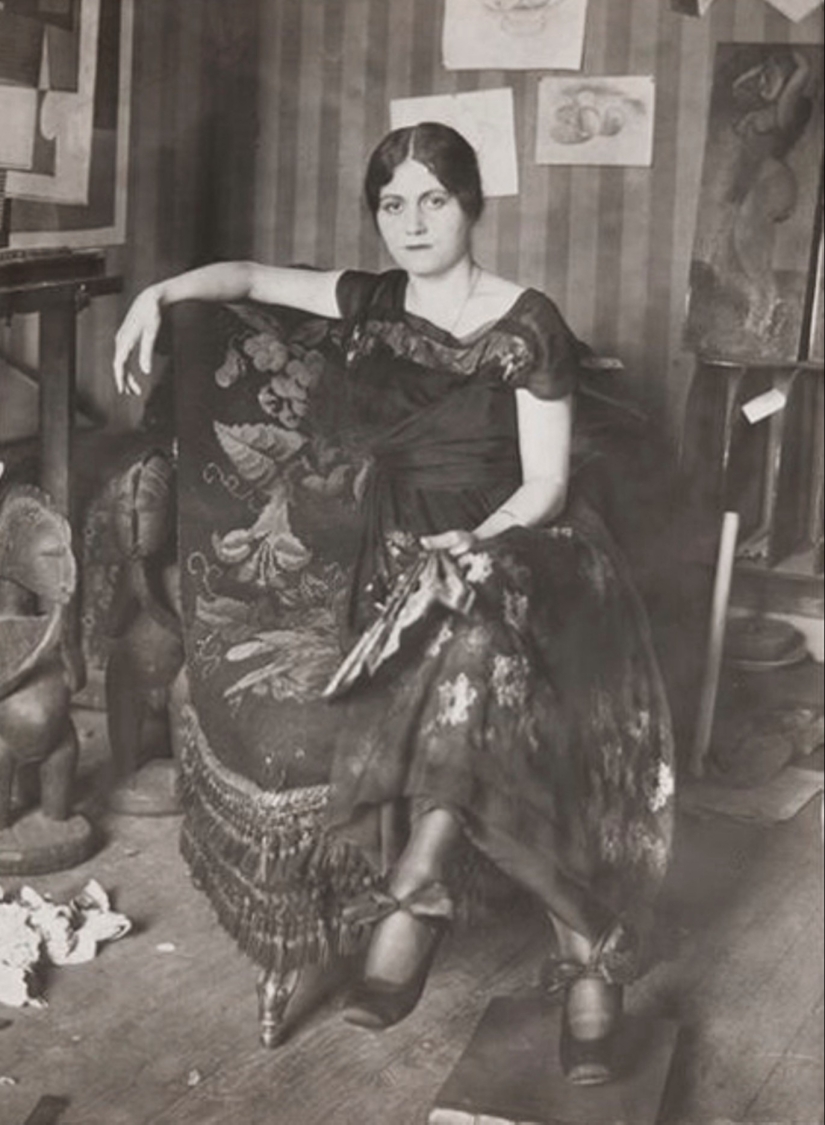
Olga Khokhlova in a chair. Around 1917. The painting is based on a photograph of Olga in the Picasso workshop, so we have a rare opportunity to compare how the artist saw her in love and how an impartial camera saw her. In all the portraits of the early years of their marriage, Olga is the same as in this one, seen through the prism of love — thoughtful, airy, ideal. A real "Russian soul".
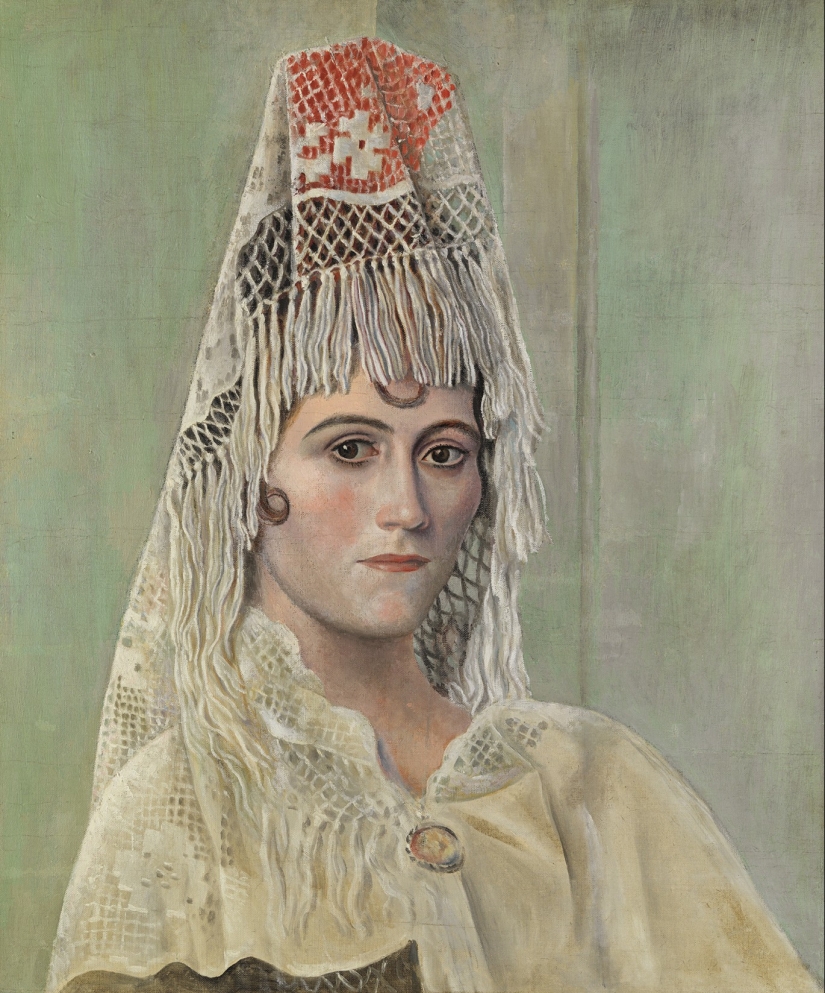
Pablo Picasso. Portrait of Olga Khokhlova in a mantilla. 1917. Picasso Museum, Malaga, Spain. However, can a genius be content with a single muse? Picasso was enough for a whole ten years. The further he went, the more his wife annoyed him. And now-no tenderness, the artist paints Olga in the form of an old woman, then in the form of a horse (in a series of paintings dedicated to bullfighting). Or he draws it in the same abstract style that Olga did not like so much. Picasso has a new hobby, and in the end Olga will not stand it and will leave. He will not give her a divorce — so as not to divide the paintings. Until her death, she will remain the official wife of Picasso. But he will cease to be a muse.
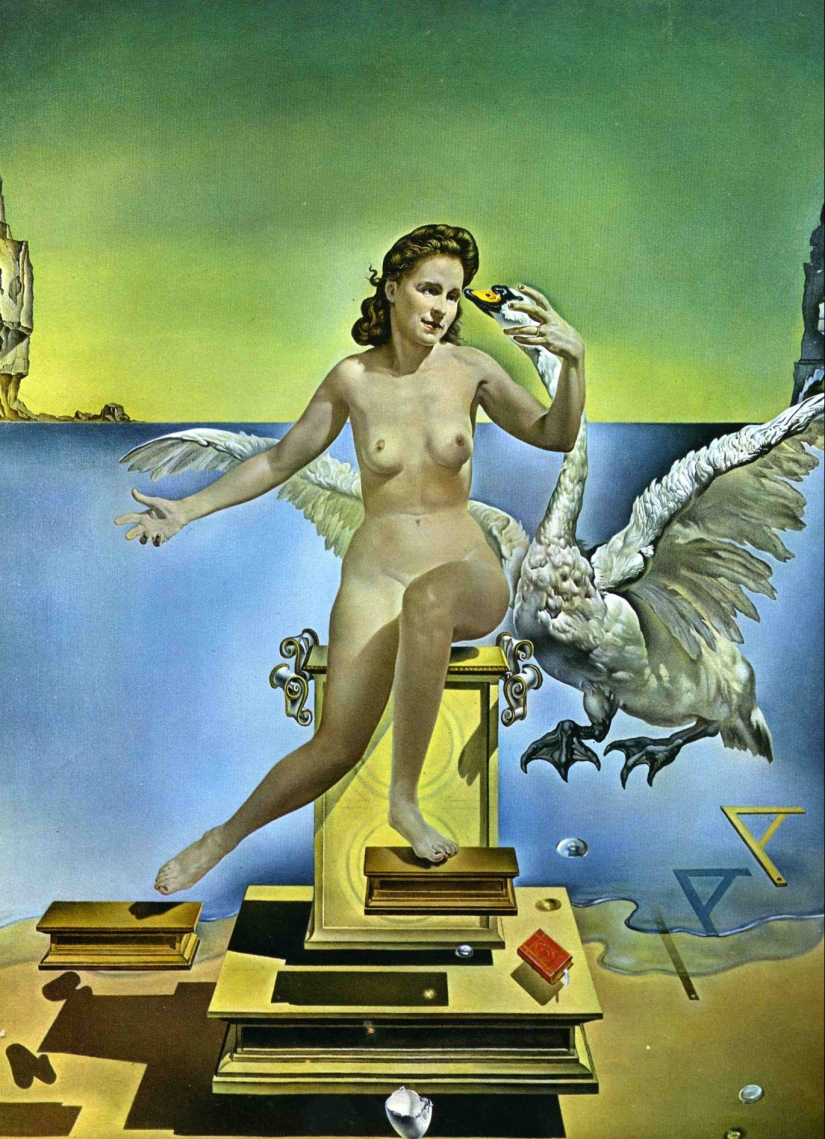
Salvador Dali. Atomic Leda. 1949. Dali Theater-Museum, Figueres, Spain.The muse of the inner world "Atomic Leda" — one of the most widely replicated works of Dali — was written a few years after the atomic bombing of Japan. But for the great surrealist, what is happening in the real world is just an excuse to talk about what was happening in his inner world. And there reigned his wife, his majestic Gala. In the canvas, she becomes the new Leda, and Dali himself becomes Jupiter, a swan hovering nearby and almost not touching his beloved. "The sublime experience of libido" - this is how the artist will explain the image. Probably, their relationship can be described as follows.

Salvador Dali and Gala. Gala is a nickname that translates as "holiday". And its owner was a real firework for her men. Before meeting Dali, she managed to be the muse of the French poet Paul Eluard (and even marry him) and the German artist Max Ernst. But she did not hesitate to leave everyone for Dali, who at that time was ten years younger than her and still not very famous. And he submitted to her with delight.
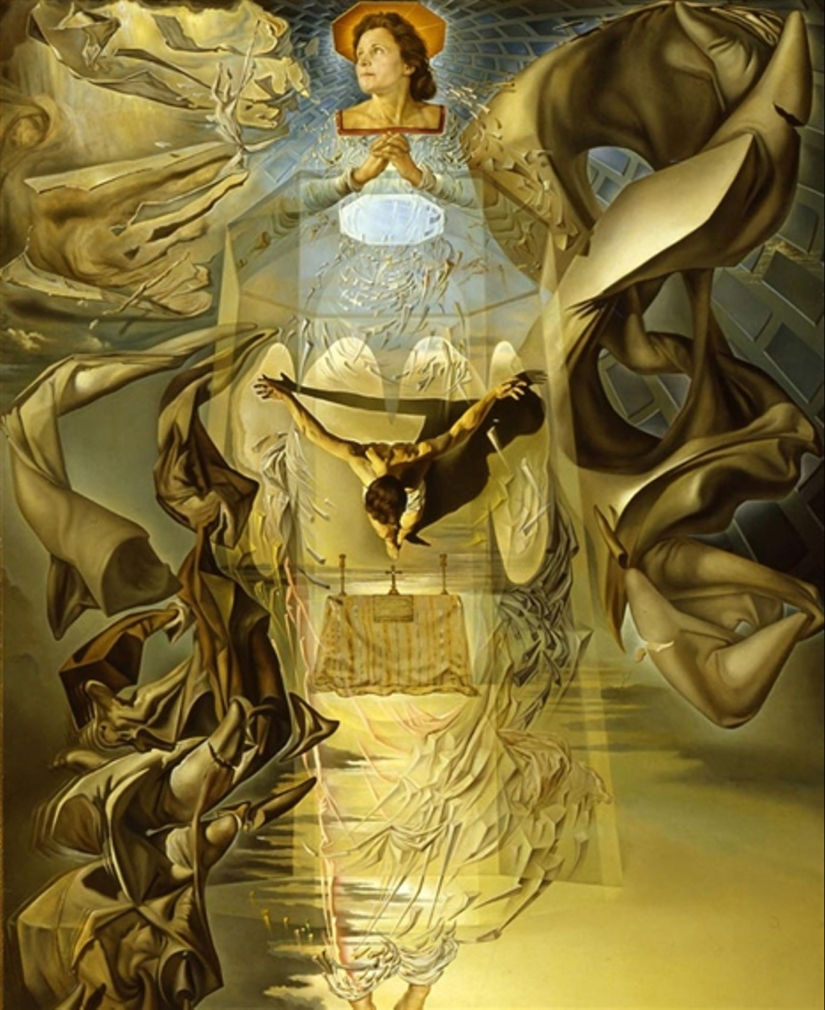
Salvador Dali "The Corpuscular azure Ascension of the Madonna", 1952. Gala will become a wife for Dali, a secretary, a manager and even a nanny — in a word, everything. But, most importantly, she will become his muse. And if we see a female image in the artist's picture, we can be almost sure that it is her. It's amazing: no matter how crazy the world around it is, it is almost always written realistically. It can be poetically assumed that the Gala was the only real reality of Salvador Dali.

Henri Matisse. A girl in a blue blouse (Portrait of Lydia Delektorskaya). 1939. The State Hermitage Museum.The muse of a happy old age There are so many portraits of Lydia Delektorskaya that it is difficult to choose the most famous one. Matisse himself admitted: "When I'm bored, I make a portrait of Madame Lydia. I know it like a letter." Here, for example, is a portrait of 1939, painted at the very beginning of the Second World War. Golden hair, blue blouse (judging by other canvases, the artist liked to paint her in blue). A calm, soulful young face, on which not lips, but eyes smile. It was this portrait that Lydia herself once brought to the Soviet Union and gave to the Hermitage. The 1947 painting, also presented to the Hermitage, is at first glance more abstract, the facial lines are simplified — but the girl's cute face remains recognizable.
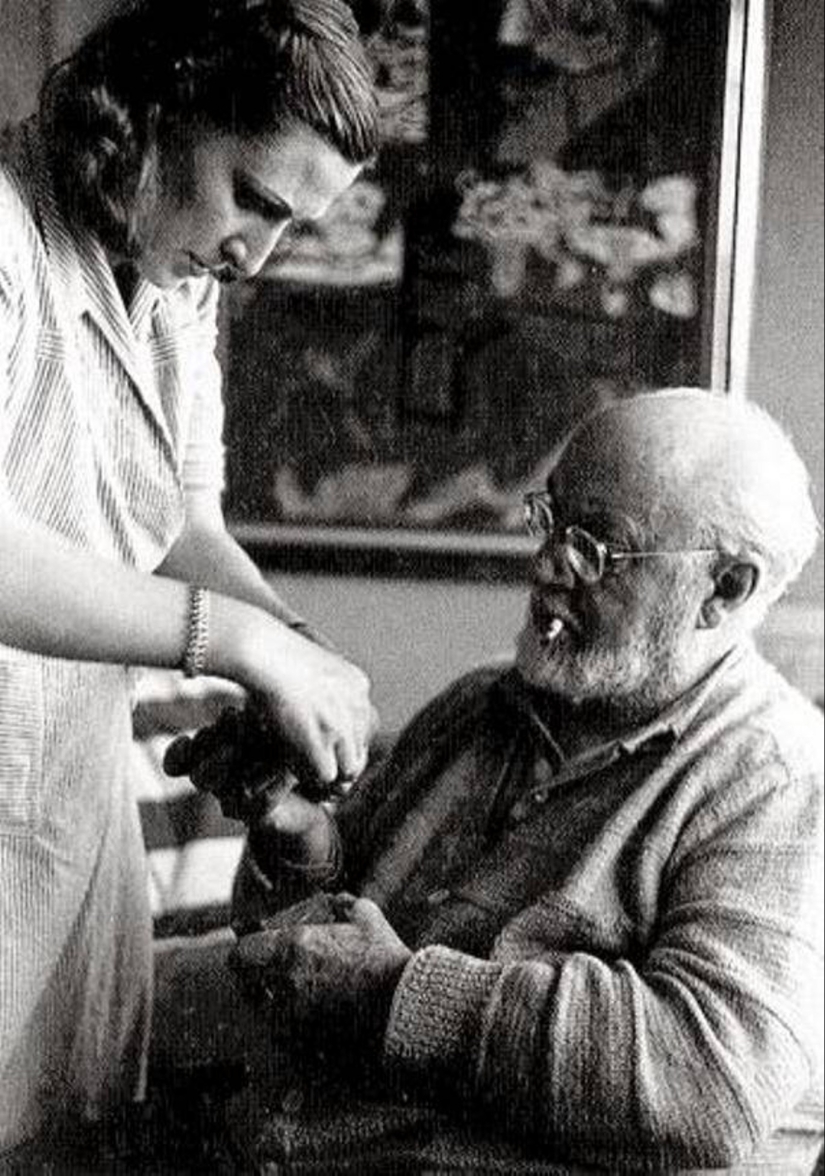
Henri Matisse and Lydia Delektorskaya. Russian emigrant Lydia, forced to look for a living after a failed marriage, knocked on the doors of Matisse's studio in search of work in 1932, when she was 22. She was lucky to become an assistant to the master, a secretary, and in addition, a nurse for his disabled wife. It is unlikely that then, having met the 65-year-old master, she could assume that she would become his favorite model, muse and such a close person that, as she later admitted, "she was for 20 years the "light of his eyes", and he is the only meaning of life for me."
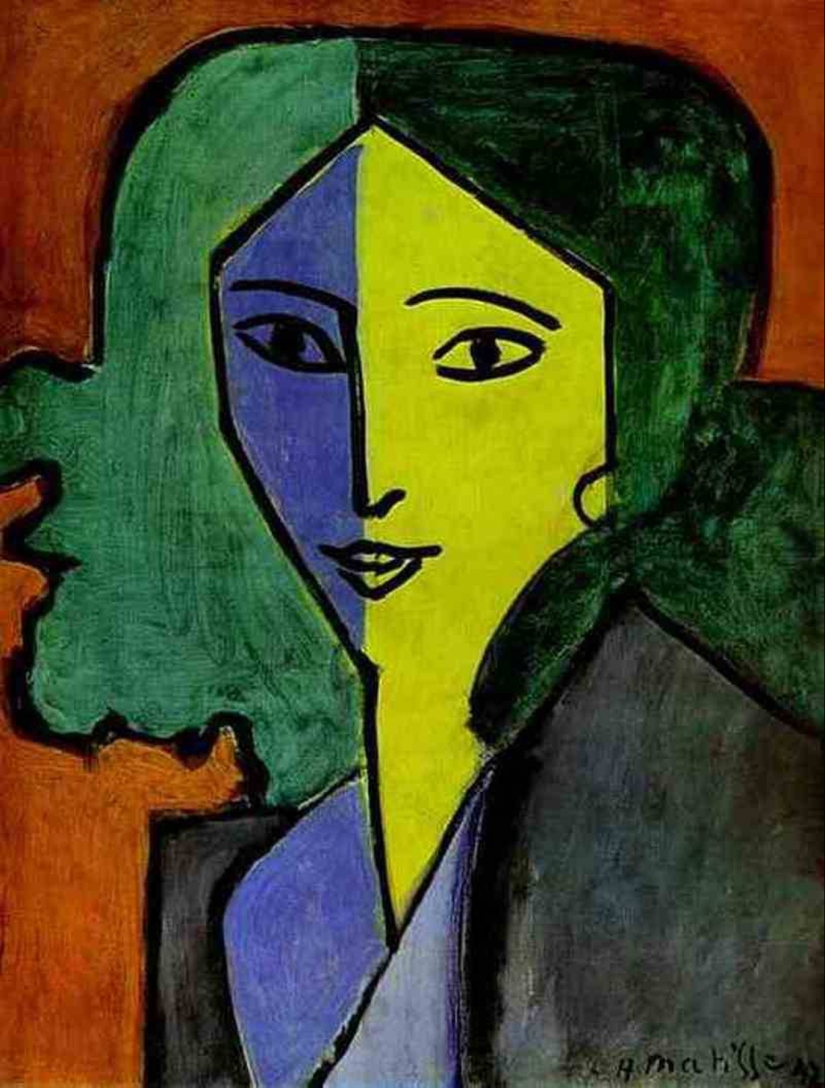
Henri Matisse. Portrait of Lydia Delektorskaya. 1947. The State Hermitage Museum. The "friend and assistant", whom the artist adored, received from him not only a salary, but also gifts that became priceless over time — her works. After his death, Lydia lived a long life, but she could never forget Matisse. And even though she left Russia as a child, it was to her homeland that Lydia Delektorskaya presented her "Matisse" collection: not only his paintings and drawings, but also blouses and jewelry in which she posed for the master, as well as his personal belongings. On her tombstone in Pavlovsk is inscribed: "Matisse preserved her beauty for eternity."
Keywords: Culture | Europe | Russian federation | Painting | Celebrities | Women | Paintings | Artist | Inspiration | Artists | Muse
Post News ArticleRecent articles

It is very important for children that a book has illustrations. Good design makes any story interesting and memorable. More than ...

Lovers of nature and outdoor recreation will find in Norway has the greatest variety of landscapes within one European country. ...
Related articles

What kind of wedding traditions do not happen! The Scots pour dirty slush over the bride, some peoples of India have decided to get ...

Ballet is the art of the sublime, delicate and refined. If created out of thin air, ballerina delight with their elegance and ...

Phillip Haumesser is a self-taught professional photographer whose works have appeared in many world publications. Homesser learned ...

Every country in the world has its own peculiarities and secrets. Therefore, a tourist, even just walking along a street devoid of ...